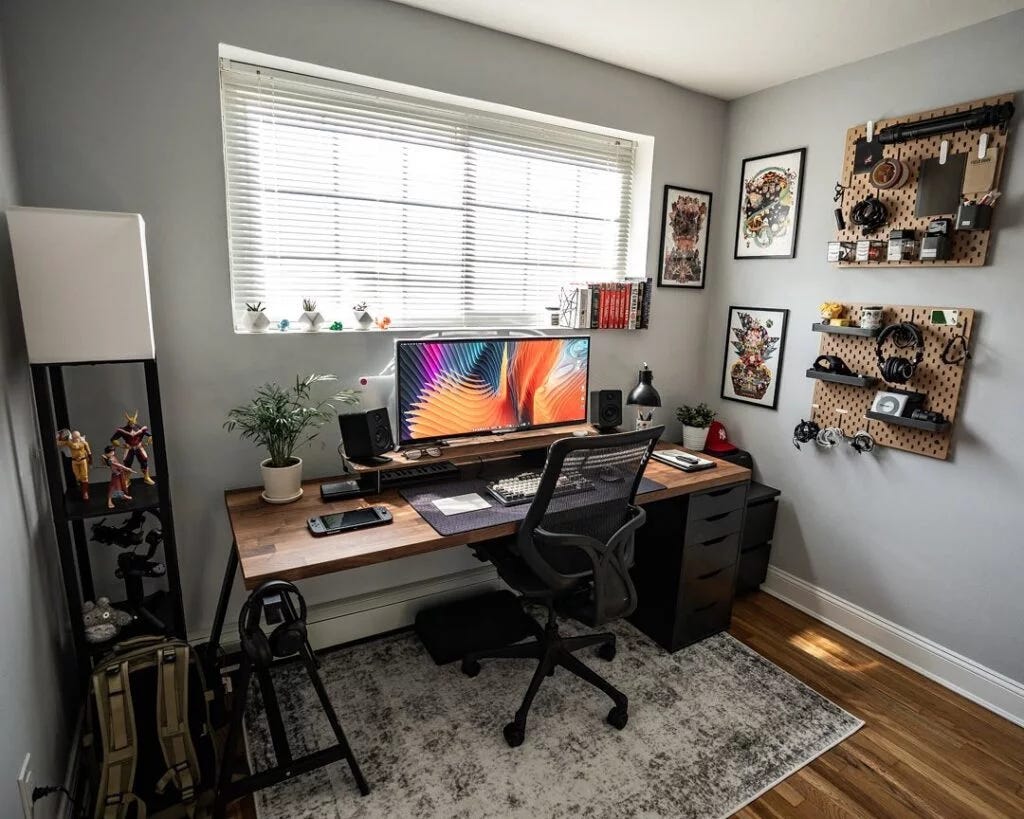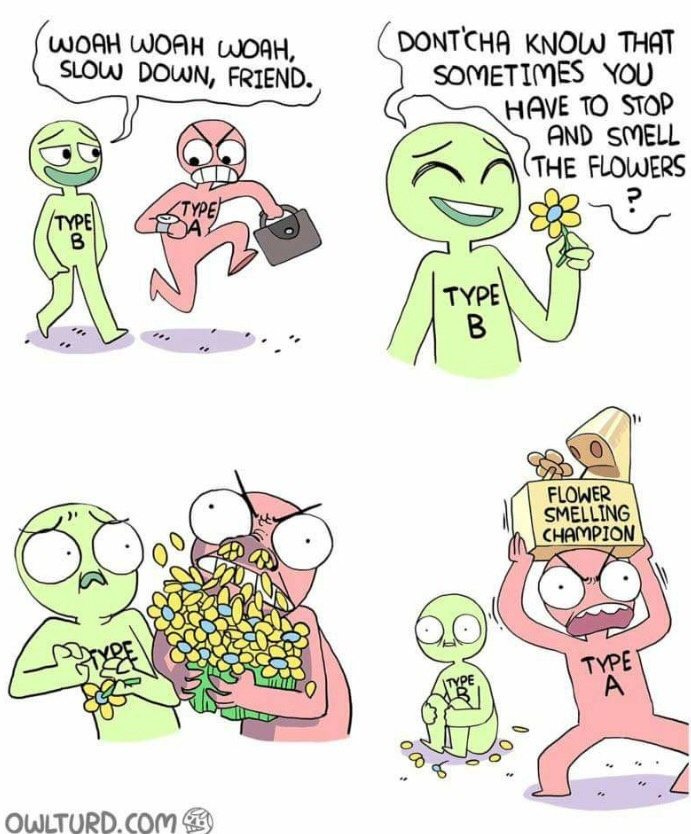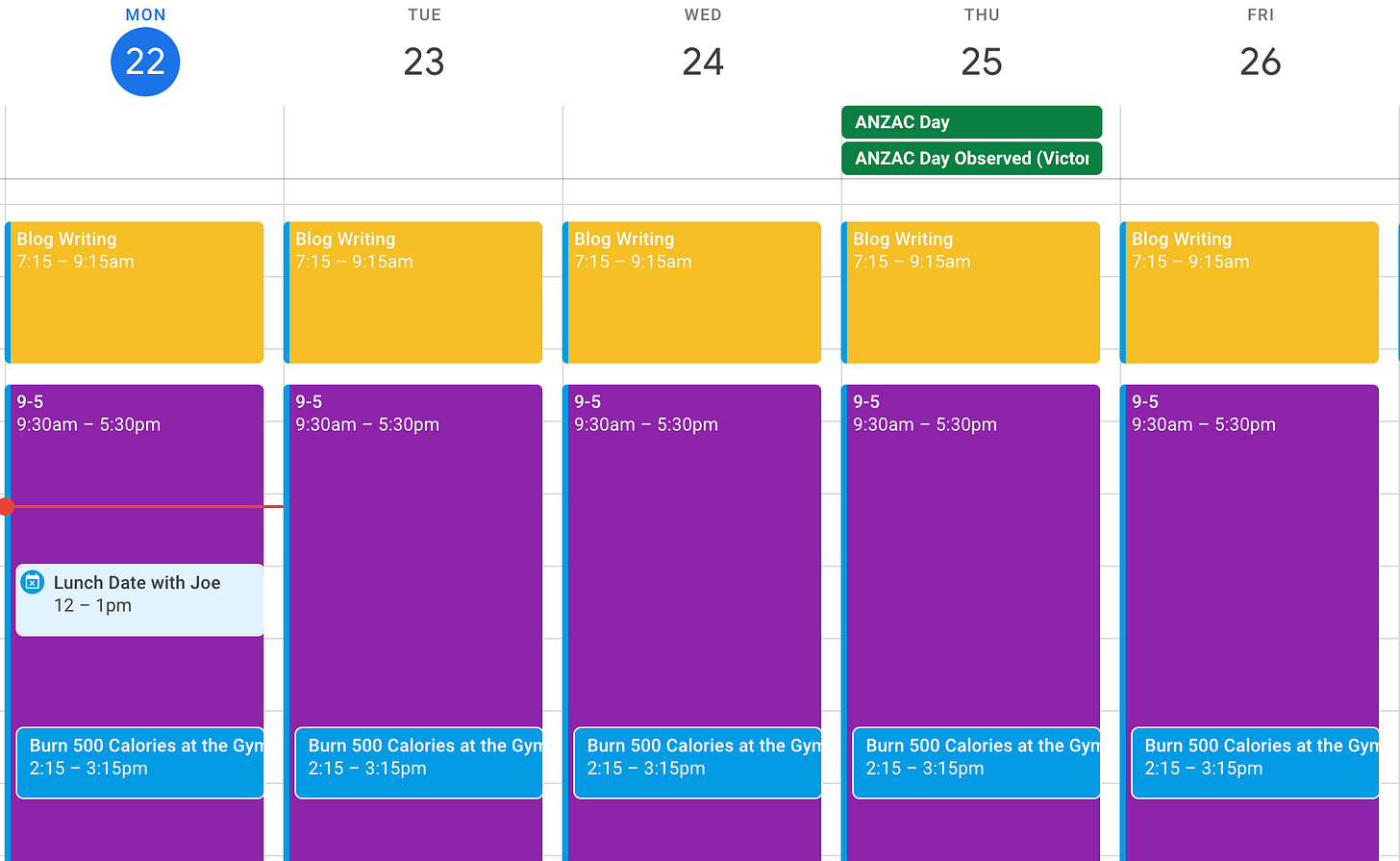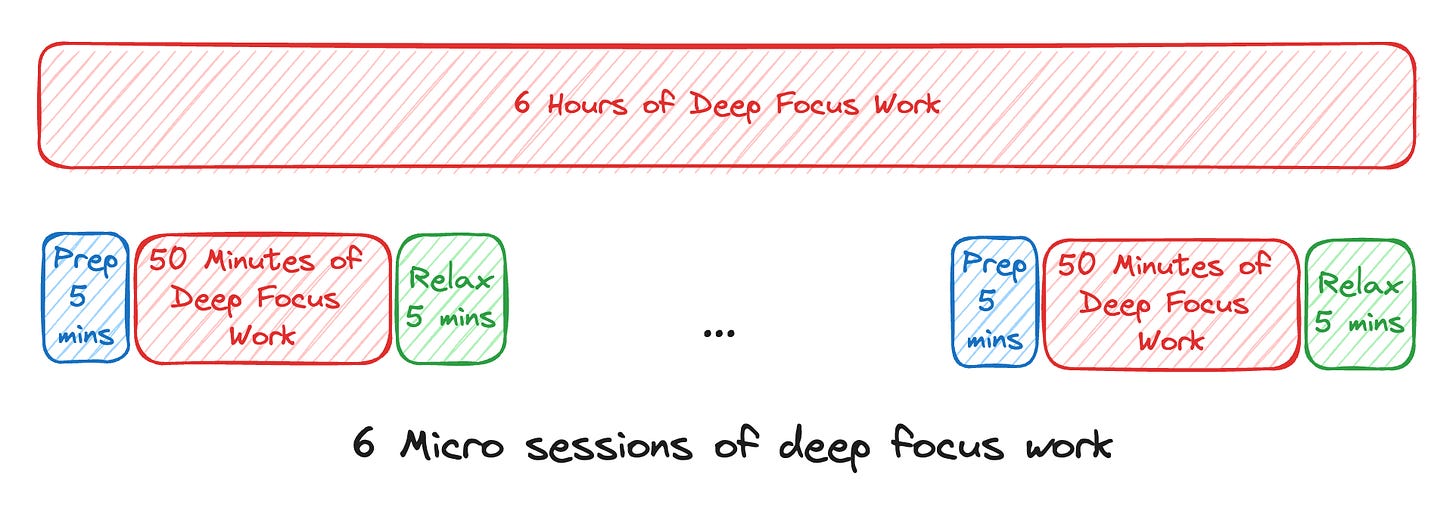The Overachievers' Guide to Getting Sh*t Done.

Are you an overachiever in life? If you run a side hustle alongside your main 9-5 job, do multiple gigs for a living, or work and study in parallel, chances are you’re an overachiever. Being an overachiever is not always bad, and it is usually seen as a sign of a highly productive life. Some people tend to associate overachievers with stress and unhappiness, but I have met overachievers in real life who know how to enjoy life and their hustle.
However, one common problem I see with overachievers struggling with is prioritising important tasks that don’t have an urgency associated with them, often finding themselves procrastinating. In this blog, I will explain why overachievers find it hard to do this and suggest some strategies you can try to help you with it, using examples of consistency and intensity tasks.
Example #1: Going To The Gym
This is an example of a “consistency” task. Overachievers are very result-oriented. When juggling work, side hustles, passion, and family, going to the gym, although an important activity to maintain a healthy lifestyle, gets sidelined because the results are not instantaneous, and the goals are not urgent. When overachievers schedule a consistent block of time in their calendars for their gym sessions, they expect results that are in some way consistent with their efforts, but things like weight loss and muscle mass are not linear metrics. This is a major de-motivator. The second reason it gets sidelined is because of the nature of the activity - stamina and energy-intensive workouts can affect their productivity in tasks after the gym. Regular gym sessions, however, play a crucial role in enhancing the overall well-being of an overachiever, contributing significantly to both mental and physical health.
Example #2: Completing Your PhD Thesis
This is an example of an “intensity” task. Completing your thesis requires you to spend a large block of deep focus time working on it, which can sometimes be days or weeks. The major de-motivator here is the sheer effort and energy required to stay focused and work on a singular task for a sustained period of time. Emphasizing the importance of single-tasking is crucial in this context, as it allows for maintaining deep focus and avoiding the pitfalls of multitasking, leading to more effective progress on your PhD thesis. The second reason why intensity tasks get deprioritised is that it’s usually hard to track the progress, and the lack of micro rewards in these tasks is another reason why overachievers procrastinate.
Before reading on, if you're not already a part of our exclusive member community, I would highly appreciate it if you could support this publication by subscribing and sharing this article. It's free forever, and articles will be delivered straight to your inbox. Plus, you get instant access to bonus content, free downloadables, discounts, etc.
Sign up for iamsanjay.
Founder, Tech and Data Consultant, Blogger and now a new Dad!
No spam. Unsubscribe anytime.
Activation Energy & The Hump of Procrastination
In the upcoming strategies, we'll explore how to overcome procrastination by utilising commitment devices and other techniques to take action well ahead of time.
What is Activation Energy?
It’s the cognitive effort and motivation required to start an activity or a task. In the above illustration, activation energy can be imagined as the effort required to push the boulder up the mountain to its peak. The higher the peak, the more difficult it is to push. Similarly, the harder the task, the harder it is to get started and get over the hump of procrastination. To overcome this, it's essential to create strategies that lower the activation energy for starting tasks.
What is the Hump of Procrastination?
The hump denotes the difficulty of the task and the likelihood of procrastination. The higher the hump, the more difficult the task is and the higher likelihood of procrastination. The lower the hump, the easier the task and the lower the likelihood of procrastination. Effectively planning and prioritising tasks is crucial to reducing the likelihood of procrastination on any given day.
Your Goal: Lower The Hump and Prioritise Important Tasks
So, your goal as an overachiever is to avoid procrastination on important tasks, including managing household chores effectively, as part of lowering the hump of procrastination. This can be done by making the climb easier by lowering the hump. Two factors affecting the height of the hump are:
Emotional Friction
This is denoted by the red arrows in the opposite direction in the illustration. They can be thought of as friction in physics. Emotional friction denotes your thoughts and emotions pulling you back when thinking of starting the task.
Environmental Friction
This is denoted by the blue downward arrows below the hump. These are external factors. Based on our example #2, if you’re planning to write your PhD thesis and you’re working out of a laptop screen, it’s hard to do a lot of reading and research from a laptop screen. It is a limiting factor in your environment.
Strategies To Lower The Hump
Here are some strategies to help you get started with your difficult activity and overcome the procrastination phase.
One significant challenge in overcoming procrastination is the human tendency to seek immediate gratification. This preference for instant rewards, such as watching TV or indulging in a donut, over activities that offer long-term rewards, like publishing a blog post or saving for retirement, exemplifies the struggle between our Present Self and Future Self. To combat procrastination effectively, it's crucial to focus on the importance of long-term rewards and train our minds to prioritize tasks that may not offer instant satisfaction but are essential for achieving our future goals.
Cognitive Strategies
Touching on the gym consistency example above, you can:
Try creating a schedule for your workout. Instead of working out at different times, block out the same time every day on your calendar for your workouts. This is a proven way to make working out a habit rather than something you’ll likely procrastinate.
Without a goal, you can't score - Casey Neistat.
Your workout goals cannot be very vague; they have to be very specific. Vague goals don't carry the intent or motivation to be executed. Specific, achievable and actionable goals are more likely to be successful in execution. Here are some examples of very specific goals:
Burn 500 Calories at the Gym on a Treadmill
Do 20 reps, 3 sets of pushups at the gym
Write 500 words of thesis for section 1, paragraph 2
Rewrite Chapter 2 of my book to under 5000 words.
Sometimes, the friction to get started or the hump of procrastination is too high; in such scenarios, set really small yet completely achievable goals. Something like:
Research on nuclear fission technologies for 5 minutes
Write 5 sentences on nuclear fission technologies and why its important.
Walk on a treadmill for 10 minutes or burn 100 calories
The idea is to lower the barrier to get started with the activity. Another cognitive strategy for intensive tasks is to break down your long-focused work into smaller chunks. For example, if you’re working on your thesis for 6 straight hours, it’s really hard to stay in deep focus for so many hours. I recommend you break down the long session into 6 micro sessions of 1 hour. Within each hour, you can have 5 minutes of prep time, 50 minutes of deep focus, and 5 mins of unwind and stretch.
This is inspired from Pomodoro technique. You can read more about other time management techniques in my article below:
Top 5 Time Management Tips You Must Know!
Making Progress Visible
Gamifying the entire process of deep focus sessions is another form of boosting your intrinsic motivation. The best technique is to visualise your progress. As you are able to see your progress and hit milestones, you get a sense of mastery and accomplishment, a small kick of dopamine in your brain. This will help you stay focussed and motivated for longer durations.
You can tailor your goals so that it visibly reflects progress. One trick is to have goals and subtasks labelled as shown below:
Goal: Write a Blog on Time Management (25% done)
[x] - 1/4 Write 300 words on What is Time Management?
[] - 2/4 Write 200 words on why it is important?
[] - 3/4 Write 500 words on different time management strategies
[] - 4/4 Write the conclusion
This way when you're done with task one, you know you're 25% done. You can track how much is done and how much is left.
Using a Screen Time App like Opal can really help you get better at focus work sessions. It blocks all distracting notifications from your social media applications, and gives you a focus report to track your focus sessions' performance.
To effectively stop procrastinating, consider employing cognitive strategies such as making future consequences present and using commitment devices to hold yourself accountable.
Environmental Strategies
Going back to the PhD thesis example for an intensive task, you can:
Get a large work monitor for researching, preferably 27 inches or above. Full HD or 2k resolutions are ideal for research and general reading. Large monitors give you the screen real estate to have multiple apps and tabs open at once. Having them open at once means fewer switching between open windows, lesser context switching, and reduced cognitive load.

Best Monitors for Productivity
On the previous night, open up the tabs and pages for your thesis and research on your monitor and have the windows organised on your desktop. That way, the next day when you are sitting down at your desk, you'll have everything organised, ready and open to get started. Additionally, consider preparing a to-do list to organize your tasks for the next day, ensuring you prioritize and focus on one task at a time for increased productivity.
💡
Rectangle is a neat and handy tool for Mac to arrange and organise windows on your Mac. It's free and super useful. I use it every day, and I would highly recommend you try it out if you open and use a lot of apps at once.
Now touching upon the Gym example of a consistent task, here are some things you can try:
A strategy that particularly works for me is usually dressing up for gym in the morning well in advance. On the days that I work from home, I usually dress up for gym in the morning although I hit the gym only in the afternoon. I'll have my water bottle and my gym back packed, so when it's time to head to the gym, I am ready to go and I leave no room for procrastination.
I hope you enjoyed reading this article. You can read my other articles on productivity below:
Decoding Your 20s: What Matters The Most
Laid Off? Bounce Back with These 10 Empowering Tips!
Also, follow my Automate The Boring Stuff series here:
ATBS #1: Map It Instantly On Google Maps
ATBS #2: Bring Your Own ProofReader
Before surfing away, if you're not already a part of our exclusive member community, I would highly appreciate it if you could support this publication by subscribing and sharing this article. It's free forever, and articles will be delivered straight to your inbox. Plus, you get instant access to bonus content, free downloadables, discounts, etc.







